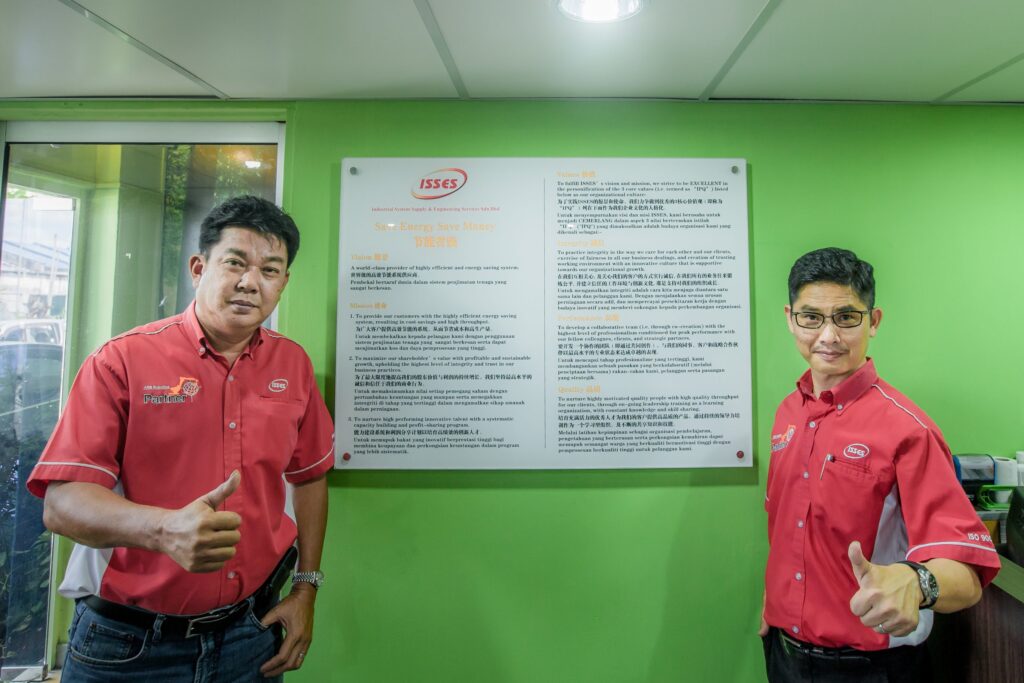As the global community increasingly confronts the challenges posed by climate change, nations are exploring a myriad of strategies to reduce greenhouse gas emissions and promote sustainability. In this context, carbon credits Malaysia has emerged as a pivotal component of the country’s environmental strategy. With a strong commitment to sustainable development, Malaysia is pioneering innovative projects and policies that position it as a leader in the carbon credit arena. This article explores some of these groundbreaking initiatives, the policies that support them, and the overall impact on Malaysia’s environment and economy.

Understanding Carbon Credits
Before delving into Malaysia’s specific initiatives, it is essential to grasp the concept of carbon credits. A carbon credit represents one metric ton of carbon dioxide or its equivalent in other greenhouse gases that have been either removed from the atmosphere or prevented from being emitted. The concept operates on a cap-and-trade system, where a regulatory authority sets a limit on total emissions, allowing companies that reduce their emissions to sell their surplus credits to others that exceed their limits.
This market-based approach incentivizes companies to innovate and invest in cleaner technologies, fostering a culture of sustainability while providing a framework for accountability. By establishing a carbon credit system, Malaysia aims to mitigate climate change impacts, attract investment, and create economic opportunities.
The Malaysian Commitment to Sustainability
Malaysia’s commitment to sustainability is reflected in its national policies and international agreements. As a signatory to the Paris Agreement, Malaysia has pledged to reduce its greenhouse gas emissions intensity by 45% by 2030 compared to 2005 levels. This ambitious goal necessitates a robust framework for carbon credit trading and innovative solutions to achieve significant emissions reductions.
To this end, the Malaysian government has introduced several initiatives and policies that facilitate the development of a thriving carbon credit market. These efforts align with the United Nations Sustainable Development Goals (SDGs) and demonstrate Malaysia’s dedication to balancing economic growth with environmental stewardship.
Innovative Carbon Credit Projects in Malaysia
1. Renewable Energy Initiatives
One of the most significant avenues for carbon credits in Malaysia is the development of renewable energy projects. The government has set ambitious targets for renewable energy generation, aiming for 20% of its electricity supply to come from renewable sources by 2025. This initiative includes the promotion of solar, wind, and biomass energy.
Solar Energy Projects
Solar energy has emerged as a key focus area in Malaysia’s renewable energy strategy. The government has implemented the Net Energy Metering (NEM) scheme, which allows consumers to install solar panels and sell excess electricity back to the grid. This initiative not only promotes solar energy adoption but also generates carbon credits for participants by reducing reliance on fossil fuels.
Additionally, large-scale solar farms are being developed across the country, creating opportunities for carbon credit generation. These projects contribute to emissions reductions while providing sustainable energy to communities and businesses.
2. Sustainable Palm Oil Certification
The palm oil industry is a significant contributor to Malaysia’s economy, but it has faced criticism for its environmental impacts, including deforestation and greenhouse gas emissions. To address these concerns, Malaysia has implemented the Malaysian Sustainable Palm Oil (MSPO) certification scheme, which promotes sustainable practices within the palm oil sector.
By adhering to MSPO standards, palm oil producers can enhance their environmental performance and generate carbon credits through practices such as reforestation and sustainable land management. This certification not only helps mitigate the industry’s impact on the environment but also enhances Malaysia’s reputation as a responsible producer of palm oil.
3. Reforestation and Afforestation Projects
Forestry plays a crucial role in carbon sequestration, making it a vital component of Malaysia’s carbon credit strategy. The government has launched various reforestation and afforestation initiatives aimed at restoring degraded land and enhancing forest cover.
One notable project is the Heart of Borneo initiative, which aims to conserve the biodiversity of the Borneo rainforest and promote sustainable land use practices. By restoring forests and promoting agroforestry, these projects can generate carbon credits while preserving Malaysia’s rich biodiversity.
4. Energy Efficiency Programs
Improving energy efficiency across various sectors is another key strategy for reducing emissions in Malaysia. The government has introduced several initiatives to promote energy efficiency, including the Energy Efficiency and Conservation (EE&C) program.
This program encourages businesses and households to adopt energy-saving technologies and practices, leading to significant emissions reductions. By participating in these initiatives, companies can earn carbon credits while contributing to Malaysia’s overall sustainability goals.
5. Waste Management Solutions
Effective waste management is essential for reducing greenhouse gas emissions and promoting sustainability. Malaysia has been implementing innovative waste management solutions, including the establishment of waste-to-energy (WTE) plants.
These facilities convert organic waste into energy, reducing methane emissions from landfills and generating renewable energy. By diverting waste from landfills and utilizing it for energy production, Malaysia can create a circular economy while generating carbon credits.
Supporting Policies and Regulatory Frameworks
To facilitate the development of carbon credits, the Malaysian government has established a supportive policy environment. These policies provide the necessary framework for stakeholders to engage in carbon credit projects and ensure the credibility and transparency of the market.
1. National Policy on Climate Change
The National Policy on Climate Change outlines Malaysia’s commitment to addressing climate change and sets the direction for the country’s efforts in emissions reduction. This policy emphasizes the importance of developing a carbon credit market and outlines strategies for promoting renewable energy, sustainable land use, and emissions reduction.
2. Carbon Pricing Mechanisms
The introduction of carbon pricing mechanisms is essential for incentivizing emissions reductions. Malaysia is exploring various carbon pricing approaches, including carbon taxes and cap-and-trade systems. By putting a price on carbon emissions, businesses will be motivated to invest in cleaner technologies and practices.
3. Incentives for Green Projects
To encourage the adoption of sustainable practices, the Malaysian government has implemented various incentives for green projects. These incentives include tax breaks, grants, and low-interest loans for businesses that invest in renewable energy, energy efficiency, and sustainable land management.
4. Capacity Building and Training
The success of carbon credit initiatives depends on the capacity and knowledge of stakeholders. The Malaysian government, in collaboration with international organizations, has been conducting training programs and workshops to build capacity among businesses, local communities, and government officials.
By enhancing understanding and expertise in carbon credits, these initiatives empower stakeholders to effectively engage in the carbon credit market and contribute to emissions reductions.
Challenges to Carbon Credit Implementation in Malaysia
Despite the significant progress made in developing carbon credit solutions, several challenges remain. Addressing these challenges is crucial for realizing the full potential of carbon credits in Malaysia.
1. Lack of Awareness and Understanding
Many stakeholders may still lack a clear understanding of carbon credits and their benefits. Increasing awareness and education on the carbon credit system is essential for fostering participation and investment in sustainable projects.
2. Verification and Monitoring
Ensuring the credibility of carbon credits requires robust verification and monitoring systems. The absence of independent verification can undermine trust in the carbon credit market. Establishing efficient verification processes is crucial for ensuring that carbon credits represent genuine emissions reductions.
3. Regulatory Uncertainty
The carbon credit market is influenced by regulatory changes, and uncertainty can deter investment. Stakeholders require a stable and predictable regulatory environment to make informed decisions and invest in carbon credit projects.
4. Competition from Other Markets
As more countries develop their carbon credit markets, Malaysia faces competition for international investment. To attract foreign investors, Malaysia must showcase its commitment to sustainability and the potential for returns on investment in carbon credit projects.
5. Balancing Economic Growth and Sustainability
Malaysia’s economic growth must be balanced with environmental sustainability. While carbon credit initiatives present opportunities for growth, ensuring that they do not compromise economic development or local livelihoods is essential.
The Future of Carbon Credits in Malaysia
The future of carbon credits in Malaysia holds great promise, with the potential for substantial environmental and economic benefits. To fully realize this potential, stakeholders must work collaboratively to overcome challenges and seize opportunities.
1. Expanding Renewable Energy Capacity
Continued investment in renewable energy projects will be critical for generating carbon credits and achieving emissions reduction targets. Malaysia can enhance its renewable energy capacity through innovative financing mechanisms and partnerships with private investors.
2. Strengthening Collaboration
Collaboration among government agencies, businesses, NGOs, and local communities is essential for advancing carbon credit initiatives. Building strong partnerships can facilitate knowledge sharing, attract investment, and enhance the credibility of carbon credit projects.
3. Integrating Carbon Credits into Business Strategies
Businesses in Malaysia should integrate carbon credits into their sustainability strategies. By actively participating in carbon credit projects, companies can enhance their environmental performance, reduce costs, and improve their reputation among consumers and investors.
4. Promoting Sustainable Practices Across Sectors
Encouraging the adoption of sustainable practices across various sectors will be crucial for achieving significant emissions reductions. The government can support this transition by providing incentives, training, and resources for businesses to adopt green technologies.
5. Engaging Local Communities
Involving local communities in carbon credit projects is essential for ensuring their success and sustainability. By empowering communities to participate in sustainable initiatives, Malaysia can enhance the effectiveness of carbon credit solutions while promoting social equity.
Conclusion
Malaysia is making significant strides in pioneering innovative carbon credit solutions through various projects and policies. The commitment to carbon credits Malaysia reflects the country’s determination to address climate change while fostering economic growth. By investing in renewable energy, sustainable agriculture, reforestation, and energy efficiency, Malaysia is positioning itself as a leader in the carbon credit market.
While challenges remain, the future of carbon credits in Malaysia holds great promise. Through collaboration, awareness-building, and the integration of sustainable practices, Malaysia can unlock the full potential of carbon credits and pave the way for a greener, more sustainable future. The path forward will require concerted efforts from all stakeholders, but the rewards will be worth the investment, benefiting both the environment and the economy for generations to come.
